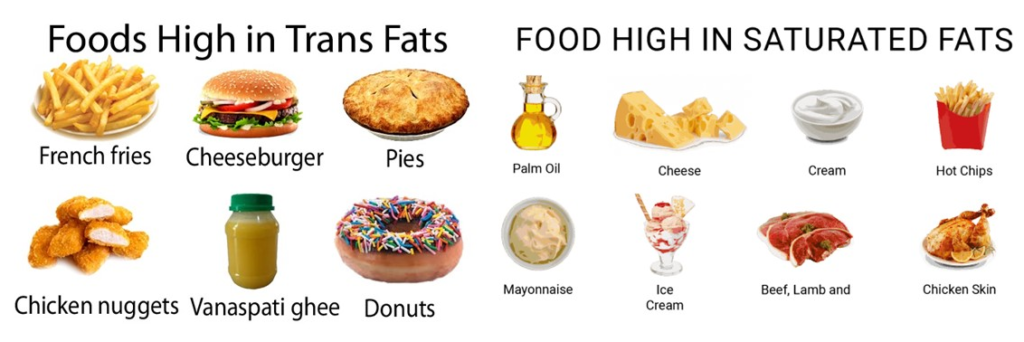People indulge in foods containing saturated fats and trans fats for many reasons despite the known health risks. One of the most compelling reasons is the pleasure derived from their taste and flavour. Foods rich in saturated fats, such as cheese, ice cream, and fatty meats, are delicious and a source of joy for many. Their rich, creamy texture and savoury taste make them irresistible, adding a delightful touch to our meals.

Convenience and accessibility also play significant roles in consuming saturated and trans fats. Fast food, processed snacks, and baked goods often contain high levels of these fats and are readily available, offering quick and easy meal options for busy individuals. These foods are usually less expensive and have a longer shelf life than fresher, healthier alternatives, making them attractive choices for many consumers.
Cultural and traditional roots significantly influence our dietary choices, particularly regarding the consumption of saturated fats. Many cuisines worldwide feature traditional dishes and cooking methods that involve animal fats or tropical oils high in saturated fats. These culinary practices are not only about food; they are part of our cultural identity, making it challenging to shift to healthier alternatives, even when available.
A lack of awareness or understanding about the health impacts of saturated and trans fats can lead to their continued consumption. Despite public health efforts, many people may not fully understand the connection between these fats and the increased risk of heart disease and other health problems. Additionally, conflicting information and changing dietary guidelines over the years have confused consumers about which fats are harmful.
The food industry’s marketing and product formulation strategies have also contributed to the prevalence of saturated and trans fats in our diets. Many processed foods are designed to be highly palatable and addictive, often achieved by adding fats, sugars, and salt. These products’ widespread availability and aggressive marketing can influence consumer choices and eating habits.
Emotional and psychological factors also play a role in consuming foods high in saturated and trans fats. Many foods are “comfort foods” associated with positive emotions, stress relief, and rewards. People may turn to these foods as coping mechanisms during stress or emotional distress, reinforcing their consumption despite the health concerns.
Habit and familiarity are potent drivers of food choices. Many consume diets high in saturated fats and carry these eating patterns into adulthood. Changing long-established dietary habits can be challenging, especially when giving up familiar and enjoyable foods.
It’s important to remember that maintaining a healthy diet does not require eliminating certain foods. The perception that we need to cut out saturated fats entirely can lead to an all-or-nothing mentality, which is not sustainable. Instead, a more balanced approach emphasising moderation and overall dietary patterns can empower individuals to make healthier choices while still enjoying the foods they love.r us to make healthier choices while still allowing for occasional indulgences.
Tomorrow, I will share insight into Psychology Associated with Eating Unhealthy Food that negatively impact our health.
